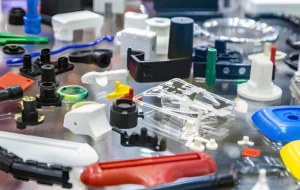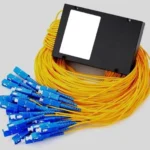Noise and vibration in motors can be more than just an annoyance. They can signal deeper issues that affect performance, durability, and energy efficiency. Engineers constantly seek ways to refine motor design for smoother, quieter operation and higher torque output. The right materials, design choices, and precision processes all play a role in this balance.
A major part of this improvement lies in rotor laminations, which form the magnetic core of electric motors. Their design determines how efficiently energy transfers and how much vibration or sound occurs during operation. This article explores the most important factors that minimize noise and enhance torque in motor systems across industries.
Precision in Core Design
Motor performance begins with the structure of its magnetic core. The precision of the core design directly influences torque output and sound levels. Even slight irregularities in alignment can create noise or reduce efficiency. High-quality lamination stacking ensures smooth magnetic flow and minimal mechanical distortion.
When the core maintains consistent geometry, the air gaps remain even, reducing vibration. Engineers rely on tight tolerances to ensure this balance. With accurate design and consistent assembly, torque increases naturally while unwanted noise stays low.
Material Quality and Magnetic Properties
The materials used in the motor’s core determine how effectively magnetic energy is transferred. Premium silicon steel or specialized alloys help reduce energy loss while maintaining stable performance. Better materials also minimize magnetostriction, which causes audible humming or buzzing during operation.
Key qualities of effective materials include:
- Low magnetic loss for efficient energy transfer
- High permeability for smoother magnetic flow
- Strong resistance to mechanical fatigue
- Reduced heat buildup during long operation
Selecting these materials carefully helps the motor stay efficient, quiet, and powerful under various loads.
Proper Alignment of Motor Components
Perfect alignment between the rotor and stator is essential for smooth motion. Any imbalance or misalignment can create friction and lead to vibration or excess noise. Proper alignment ensures magnetic forces distribute evenly, preventing performance loss.
During assembly, technicians use precision tools to align components within microns. This level of accuracy ensures the rotor moves without contact or drag. A well-aligned motor runs quieter, lasts longer, and delivers stronger torque without wasted energy.
Cooling Systems That Stabilize Operation
Heat can affect both torque output and acoustic performance. When a motor overheats, materials expand slightly, changing tolerances and causing mechanical noise. Effective cooling systems stabilize internal temperatures and maintain balance in performance.
Common cooling methods include:
- Air Cooling: Uses fans or airflow paths to manage moderate heat levels.
- Liquid Cooling: Circulates coolant to handle higher energy demands.
- Thermal Coatings: Protect components from hot spots and friction.
A stable operating temperature keeps magnetic properties consistent, ensuring smooth torque delivery and quieter operation throughout extended use.
The Role of Rotor Core Laminations in Noise Reduction
Rotor laminations play a central role in reducing electromagnetic noise and improving torque. These thin sheets of magnetic material are stacked precisely to control the magnetic field within the motor. Their design helps minimize eddy current losses, which can cause unwanted sound and heat.
When laminations are uniform and properly insulated, they reduce magnetic distortion. This smoothens the torque curve and decreases vibration. Engineers usually fine-tune lamination thickness and coating to match each motor’s speed and load requirements, achieving optimal performance.
Balancing Torque Through Advanced Manufacturing
Modern manufacturing techniques give engineers more control over torque performance. Processes such as laser cutting and high-pressure bonding create uniform lamination stacks that resist vibration and misalignment.
Here’s how precision manufacturing helps:
- Maintains consistent air gaps for better magnetic interaction
- Prevents uneven stress that causes mechanical noise
- Ensures higher energy conversion efficiency
With precision manufacturing, every part of the motor contributes to consistent torque and reduced operational sound. These refinements make motors both durable and energy-efficient.
Smarter Engineering for Smooth Performance
Reducing noise and improving torque require coordination across design, materials, and manufacturing. Each small enhancement adds up to noticeable results. Engineers continue refining lamination design, alignment techniques, and cooling systems to achieve near-silent, high-torque operation.
When every part functions as intended, energy flows efficiently from input to output. This harmony between components allows motors to perform quietly even under heavy workloads. For manufacturers, it means fewer maintenance needs and better long-term reliability.
Quiet, efficient motors rely on precision at every stage, from material selection to final assembly. Components like rotor laminations ensure smoother magnetic flow, while alignment and temperature control maintain stability. Together, these factors enhance torque and reduce unwanted vibration.
As engineering continues to advance, motors will become even more refined and dependable. The pursuit of lower noise and higher torque reflects a larger goal, creating technology that runs efficiently, lasts longer, and performs consistently across all applications. Each improvement, no matter how small, keeps industries moving forward with greater precision and power.
Also Read-Concrete Flatwork: Trends, Techniques, and Sustainable Solutions










